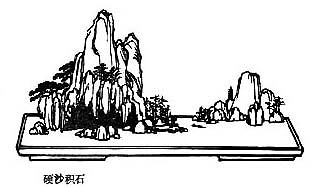Sun Zi 
 – L'Art de la guerre
– L'Art de la guerre
La stratégie chinoise ou comment s'informer, estimer, diviser, détourner, tromper, et vaincre « sans coup férir ». Tr. Amiot (fr) et Giles (en).
Des propositions de la victoire et de la défaite
Sunzi III. 4.
N'y consentez que si aucune autre solution ne peut être mise à exécution. Il faut au moins trois mois pour préparer les chariots parés pour le combat, les armes nécessaires et l'équipement, et encore trois mois pour construire des talus le long des murs. Si vous êtes contraint de faire le siège d'une place et de la réduire, disposez de telle sorte vos chars, vos boucliers et toutes les machines nécessaires pour monter à l'assaut, que tout soit en bon état lorsqu'il sera temps de l'employer. Faites en sorte surtout que la reddition de la place ne soit pas prolongée au-delà de trois mois. Si, ce terme expiré, vous n'êtes pas encore venu à bout de vos fins, sûrement il y aura eu quelques fautes de votre part ; n'oubliez rien pour les réparer.
Amiot
The rule is, not to besiege walled cities if it can possibly be avoided.1 The preparation of mantlets, movable shelters, and various implements of war, will take up three whole months;2 and the piling up of mounds over against the walls will take three months more.3
Giles III.4.

L'Art de la guerre – Sun Zi III. 4. – Chinois off/on – Français/English
Alias Sun Tzu, Sun Wu, Sun Tse, Sunzi Bingfa, Souen Tseu, Souen Wou, 孫武.
Le Canon des Poèmes, Les Entretiens, La Grande Étude, Le Juste Milieu, Les Trois Caractères, Le Livre des Mutations, De la Voie et la Vertu, 300 poèmes Tang, L'Art de la guerre, Trente-six stratagèmes
Bienvenue, aide, notes, introduction, table.
Index – Contact – Haut de page
